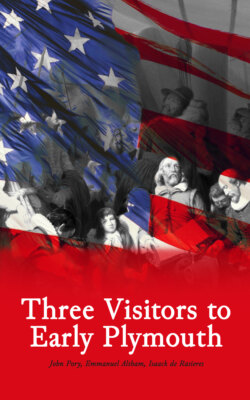Читать книгу Three Visitors to Early Plymouth - John Pory - Страница 4
Preface
ОглавлениеLetters which have survived over three hundred years, escaping the ravages of fire, water, vermin, and people who wanted to wrap fish, have a claim to our respect. All the more so if they shed light on a subject of as widespread interest as early Plymouth. As editor of the letters presented here, therefore, I had better explain what has happened to them in my hands and make it known that my intentions were honorable. In order to win as many readers for these letters as possible, I have put them into modern style in certain respects. To those written originally in English, the letters by Emmanuel Altham and John Pory, I have given modern spelling without changing the words, and punctuation to make them into sentences and paragraphs in twentieth-century fashion as much as possible. I have followed the general approach described by Samuel Eliot Morison in the preface to his edition of William Bradford’s Of Plymouth Plantation (New York, 1952), pp. vii-ix. I have also followed his example in many details, such as spellings. However, anything Pory or Altham wrote which is acceptable to modern usage has been left alone, regardless of consistency within this book. I have standardized proper names ruthlessly, except for some which have no modern or official form, as is the case with most old Dutch place names. Since Isaack De Rasieres’ Dutch has been translated directly into modern English, it has not needed the same treatment.
Footnotes have been supplied mainly to give information useful for an understanding of the letters, not exhaustive comparisons with other documents. Some notes give original spellings which others may not wish to modernize as I have done it in the text. Bibliographical information in the footnotes is supplemented by the bibliographical note at the end of the book.
The dates used in the letters are reproduced exactly. This means that they are of the Julian Calendar or Old Style, used by Englishmen until September 1752. In the biographical sketches of the letter writers, also, the old dating system has been followed. Not only was the day of the month different from the modern calendar (during the 1600’s Old Style dates ran ten days behind New Style, so that December 11, O.S., was December 21, N.S.) but the beginning of the year was reckoned from March 25, although all of March was called the first month of the year. This confused even the users of the Julian Calendar, who frequently tried to prevent mistakes by giving both the outgoing and the incoming year numbers to dates in March before the 25th—for example, March 9, 1629/1630. Hoping to minimize confusion for the modern reader, I have adopted a rarer version of this practice, giving two year numbers to all dates from January 1 to March 24.
